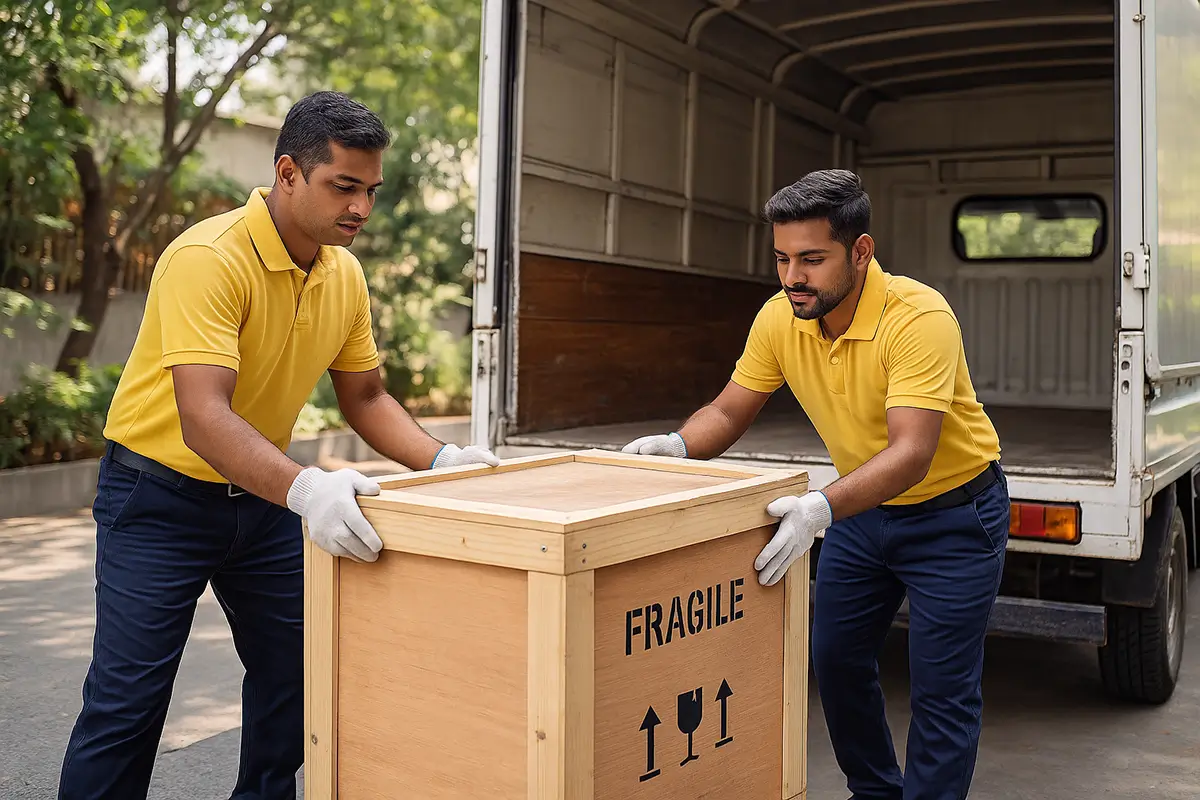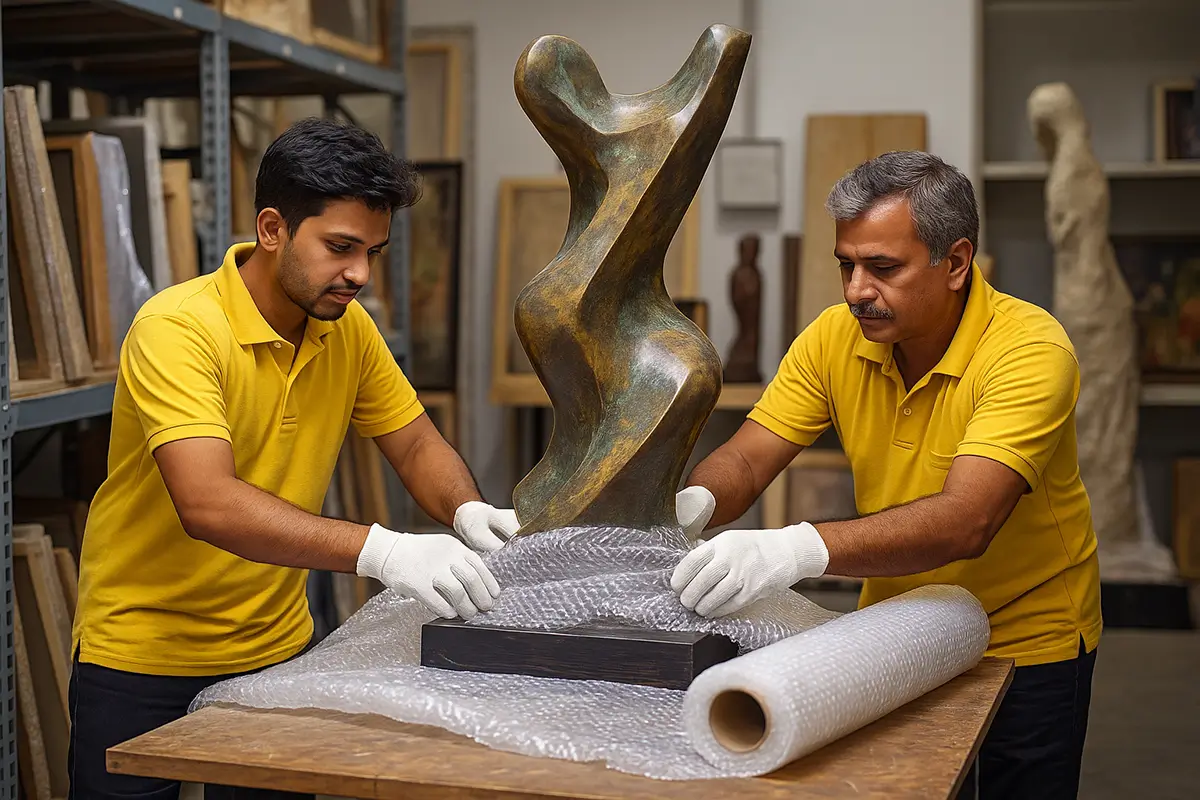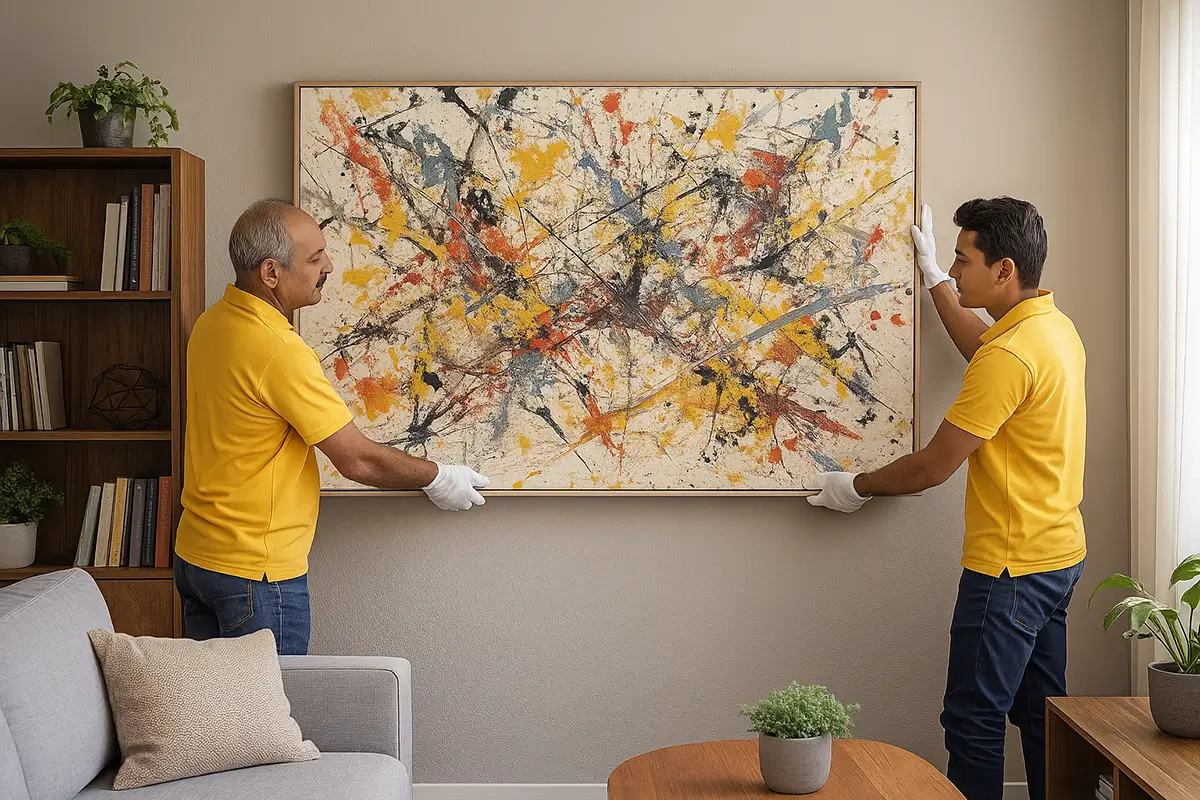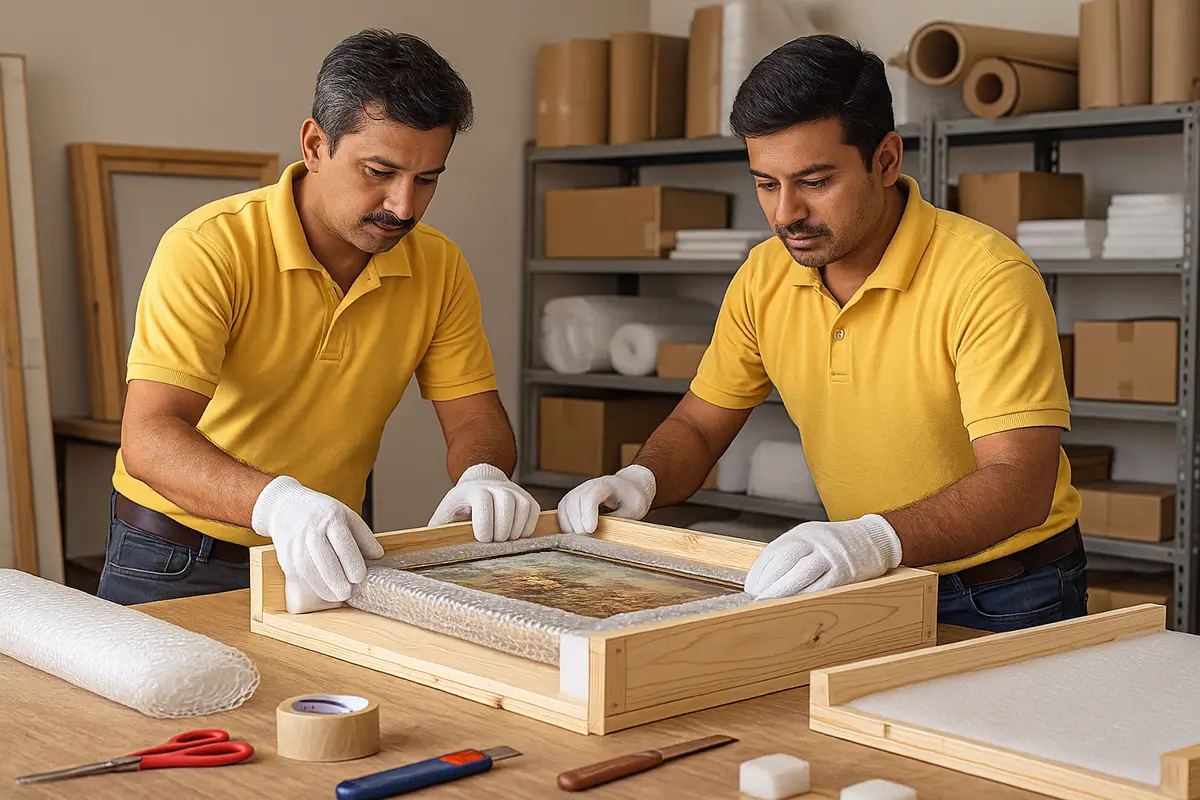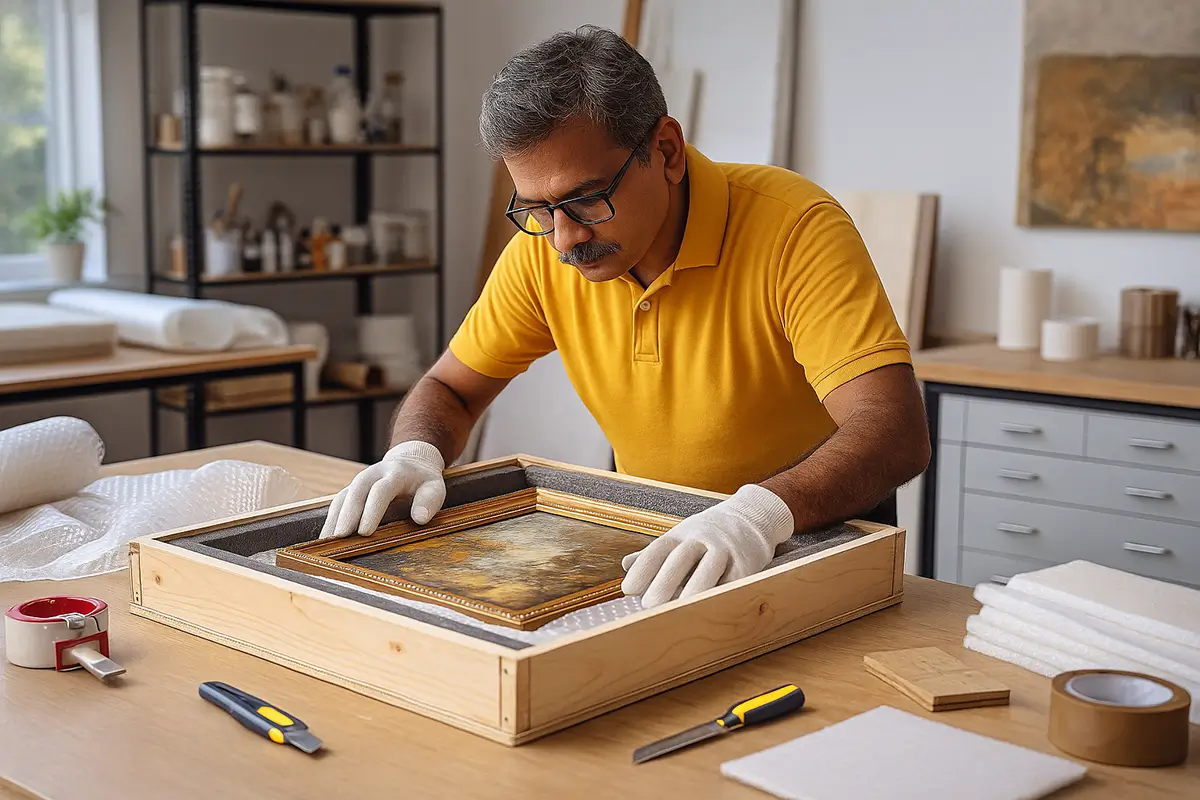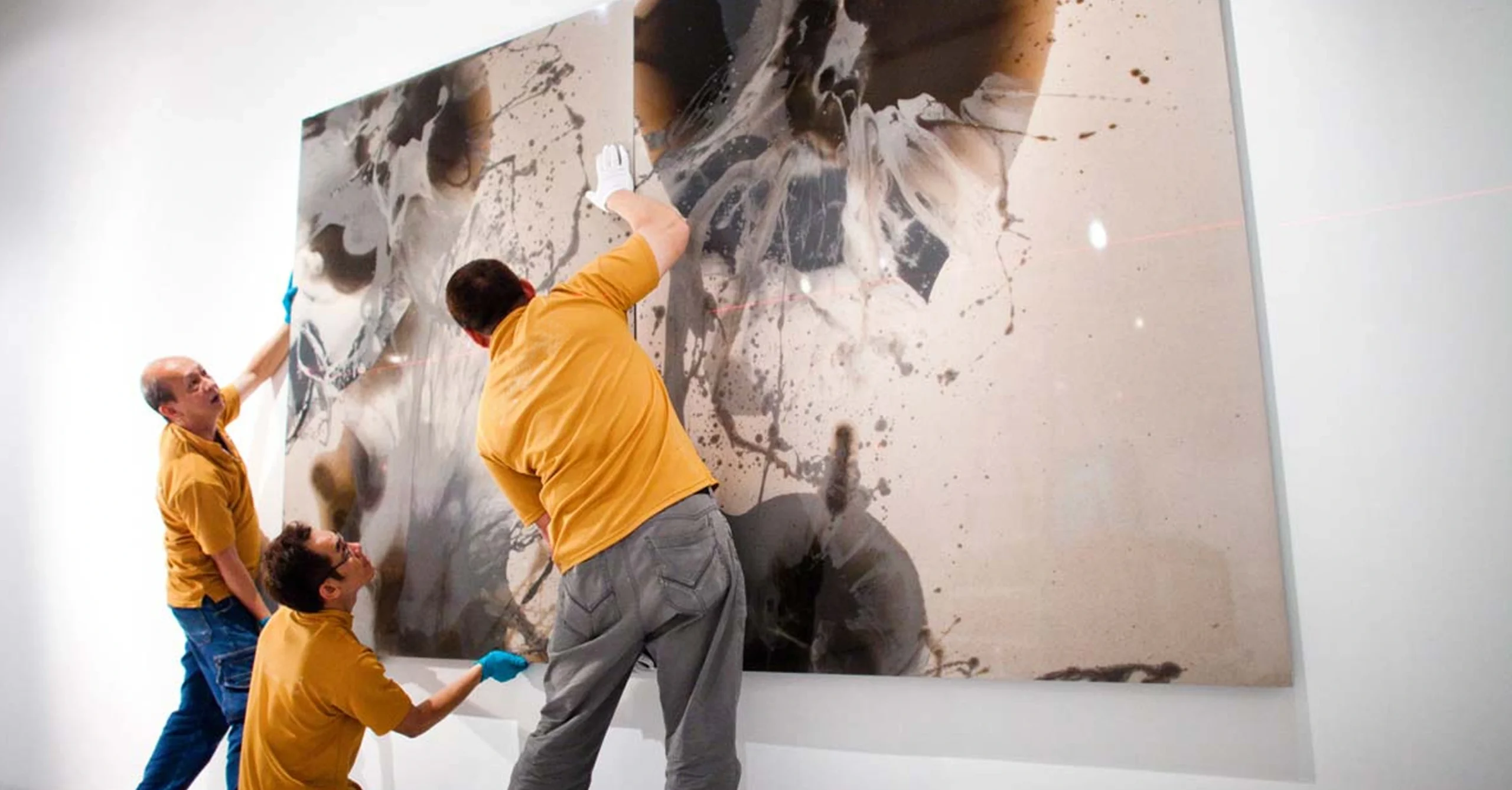Introduction: When art crosses borders, rules multiply
A painting sold by a gallery in Delhi to a collector in New York. A sculpture loaned by a museum in Mumbai to an exhibition in London. A private collector importing photography from Paris. Each case involves more than crates and cargo planes—it involves customs, regulations, taxes, and compliance.
In India, cross-border transport of art is complex, governed by a mix of cultural heritage laws, customs protocols, and international agreements. For collectors, corporates, and institutions, a misstep in compliance can mean delays, fines, or even seizure of artworks.
This blog explains the compliance framework, challenges, and best practices for moving art across India’s borders, helping stakeholders prepare for smooth international logistics.
Why cross-border art transport is different
Unlike commodities or manufactured goods, art has distinctive qualities that make its movement challenging:
- Cultural sensitivity: Some works qualify as national treasures under heritage laws.
- Non-fungibility: Each piece is unique—loss or damage is irreplaceable.
- Variable valuation: Market prices fluctuate, affecting customs and insurance.
- Fragility: Requires specialised packing, storage, and climate control.
- Legal scrutiny: Antiquities and heritage objects attract strict oversight.
This makes art logistics both a legal exercise and a technical discipline.
Regulatory framework for art export from India
Antiquities and Art Treasures Act (1972)
- Any object over 100 years old classified as an “antiquity” requires permission from the Archaeological Survey of India (ASI) for export.
- Export of antiquities without clearance is prohibited and punishable.
Export regulations for modern and contemporary art
- Works under 100 years old (e.g., paintings by contemporary Indian artists) can be exported more freely.
- Still require customs clearance with invoices and provenance records.
Customs documentation
- Commercial invoice.
- Packing list.
- Shipping bill (for exports).
- Export permits (if applicable under ASI rules).
- Valuation certificate (for high-value works).
Cultural property and international conventions
- India is a signatory to UNESCO conventions on cultural property. Export rules align with global commitments to prevent illicit trafficking.
Importing artworks into India
Customs duties and GST
- Imports of artworks attract 5% GST (standard for paintings and sculptures).
- Additional customs duties may apply depending on classification.
Documentation required
- Commercial invoice with declared value.
- Import declaration form.
- Provenance records to verify legitimacy.
- Valuation report for high-value shipments.
Restrictions
- Import of antiquities must comply with Indian cultural property laws.
- Stolen or undocumented cultural objects may be seized at customs.
Challenges in cross-border art transport
1. Regulatory complexity
Collectors often struggle to navigate overlapping rules (ASI, customs, GST).
2. Delays at ports
Without complete documentation, shipments can be delayed for weeks at airports or seaports.
3. Valuation disputes
Customs authorities may question declared values, leading to reassessment.
4. Climate and handling
Artworks may be exposed to harsh conditions during customs inspections.
5. Insurance gaps
Many policies exclude cross-border risks if not specifically covered.
6. Geopolitical risks
Sanctions or trade restrictions can affect shipments to/from certain countries.
Case examples
Case 1: Gallery export to Europe
A Delhi gallery shipped paintings for a European fair. Delay occurred because provenance documents were incomplete. After additional documentation and valuation were submitted, customs cleared the works—but late delivery cost the gallery an opportunity.
Case 2: Museum loan abroad
A Mumbai museum loaned sculptures to an international biennale. Climate-controlled crates, insurance, and ASI permits ensured safe export. The successful loan enhanced the museum’s global reputation.
Case 3: Private collector import
A Bengaluru collector imported photography from France. Customs questioned the declared value. A professional valuation resolved the dispute, and the works were released without penalty.
Best practices for smooth cross-border logistics
1. Plan early
- Begin documentation weeks before the shipment.
- Apply for ASI permits for antiquities well in advance.
2. Work with specialists
- Partner with logistics providers who understand both art handling and Indian customs.
- Use agents experienced with cross-border cultural shipments.
3. Ensure accurate valuation
- Commission professional valuation reports to avoid customs disputes.
- Keep invoices transparent and defensible.
4. Insure comprehensively
- Ensure transit insurance covers both domestic and international legs.
- Verify whether policies include handling at customs.
5. Document chain of custody
- Maintain records of who handled the artwork at every stage.
- Use data loggers for temperature and humidity to support insurance claims if needed.
6. Comply with international standards
- Align with UNESCO conventions to prevent reputational risks.
- For loans, follow International Council of Museums (ICOM) guidelines.
The role of technology in cross-border art logistics
- Blockchain provenance: Creates tamper-proof records to reassure customs.
- IoT sensors: Provide live environmental data during international transport.
- Digital customs filing: Streamlines export/import clearances.
- AI valuation analytics: Helps defend declared values against reassessments.
The importance of professional services
Providers such as Art Logistics Services manage end-to-end cross-border processes:
- Preparing customs documentation.
- Securing ASI permits for antiquities.
- Coordinating climate-controlled air freight.
- Facilitating insurance with international coverage.
- Advising on tax efficiency for imports/exports.
With professionals, collectors avoid costly delays and compliance risks.
Future outlook: Internationalising India’s art market
As India’s art market globalises, cross-border logistics will become increasingly common. Trends include:
- More museum exchanges: Strengthening cultural diplomacy.
- Growth of Indian artists abroad: Driving exports.
- Professionalisation of customs processes: Reducing delays with digitalisation.
- Standardisation of valuation practices: Creating global consistency.
For collectors and institutions, this means cross-border art transport will evolve from a niche challenge to a mainstream necessity.
Conclusion: Compliance is culture’s passport
Moving art across borders is not just a technical challenge—it is also a legal and cultural responsibility. For India, with its rich heritage and dynamic contemporary scene, compliance ensures that artworks can travel safely, lawfully, and reputably.
Without documentation, valuations, and permits, even the best packing and vehicles cannot protect against seizure or dispute. But with the right strategy, cross-border art transport becomes a seamless process—connecting Indian art with the world.
Learn more about ourArt Logistics Services. At TurmericEarth, we specialise in international art transport, managing compliance, customs, insurance, and handling—ensuring artworks cross borders safely, legally, and with their value intact.



